This project aims to personalize Advanced Driving-assistance Systems (ADAS) for autonomous vehicles with the self-driving cars simulator CARLA. The two main focus are on personalizing lane changing and personalizing Adaptive Cruise Control (ACC) that includes vehicle following and lane following.
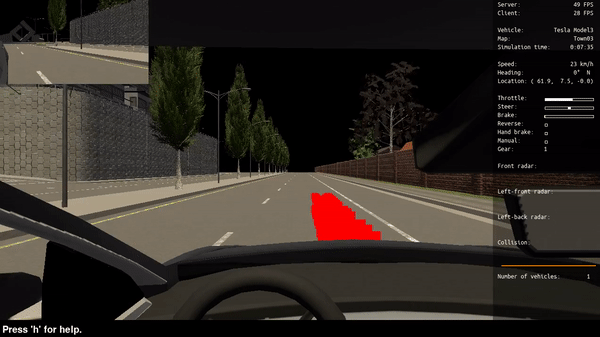
Lane Following Case
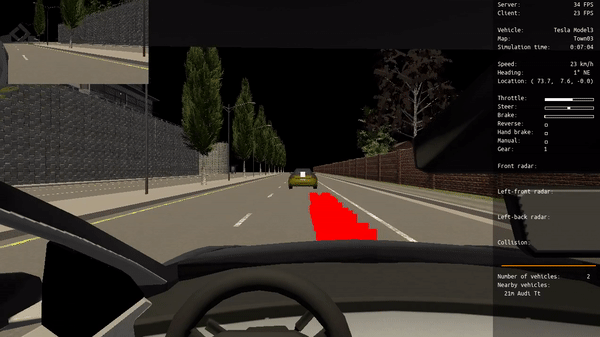
Vehicle Following Case
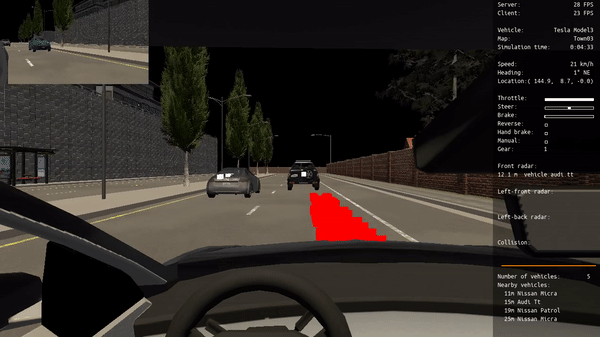
Lane Changing Case
Ubuntu 18.04 CARLA 0.9.8
Go to official Carla Releases Github page.
Download [Linux] CARLA 0.9.8, unzip the file and rename the folder as CARLA_Simulator. Additional maps are optional.
Put CARLA_Simulator folder and this repository folder in the same folder. So the folder structure should look like:
Carla
├── Assistive-Driving-in-CARLA # This repository
│ ├── agents # Self-driving and Personalization module
│ │ ├── ...
│ ├── data # Useful data
│ │ ├── ...
│ ├── demo # Demonstration for README
│ │ ├── ...
│ ├── environment # Scenes and different scenes set up
│ │ ├── ...
│ ├── LICENSE
│ ├── README.md
└── CARLA_Simulator # Carla Simulator of suggested version
├── ...
numpy, scikit-learn, casadi, opencv and pygame should be correctly installed.
jstest-gtk is also needed if one would run Carla with a hardware steering wheel, a Logitech steering wheel for example.
-
Go to CARLA_Simulator folder,
cd Carla/CARLA_Simulatorrun CARLA in Low Graphic Quality
./CarlaUE4.sh -quality-level=Lowor off-screen mode.
DISPLAY= ./CarlaUE4.sh -opengl -
Go to the environment folder of this repository.
cd Carla/Assistive-Driving-in-CARLA/environmentThere are options for generating different scenes.
To perform personalized ACC when there is no vehicle in front, also known as lane following, generate scene 0 where only the ego vehicle exists by:
python ego_vehicle.pyTo perform personalized ACC for vehicle following, generate the first scene where one vehicle is in front of the ego vehicle by:
python ego_vehicle.py -s 1To perform personalized lane changing, generate the second scene where multiple vehicles are surrounding the ego vehicle:
python ego_vehicle.py -s 2 -
If one would like to run it with hardware setup, he could run it by:
python ego_vehicle.py -hw 1which will use both keyboard, steering wheel and pedal control as vehicle inputs.
The vehicle is initialized with autopilot mode on. To switch between manual control and autopilot mode, press p.
To start or end the learning process, press l in manual control mode. Noted that starting and ending learning process would only collect driver's behavior data. One has to press t to let the model learn from the data and be stored locally.
After learning, one could regenerate the scene by pressing Backspace and turn autopilot mode on to see the performance of the vehicle.
It is advisable to personalize lane following in front in scene 0, to clone vehicle following behavior in scene 1, and to teach the model lane changing in scene 2.
Some sets of data of 3 different drivers are stored in data/Driver_Data.
personalized parameter: target_speed
method: GMM
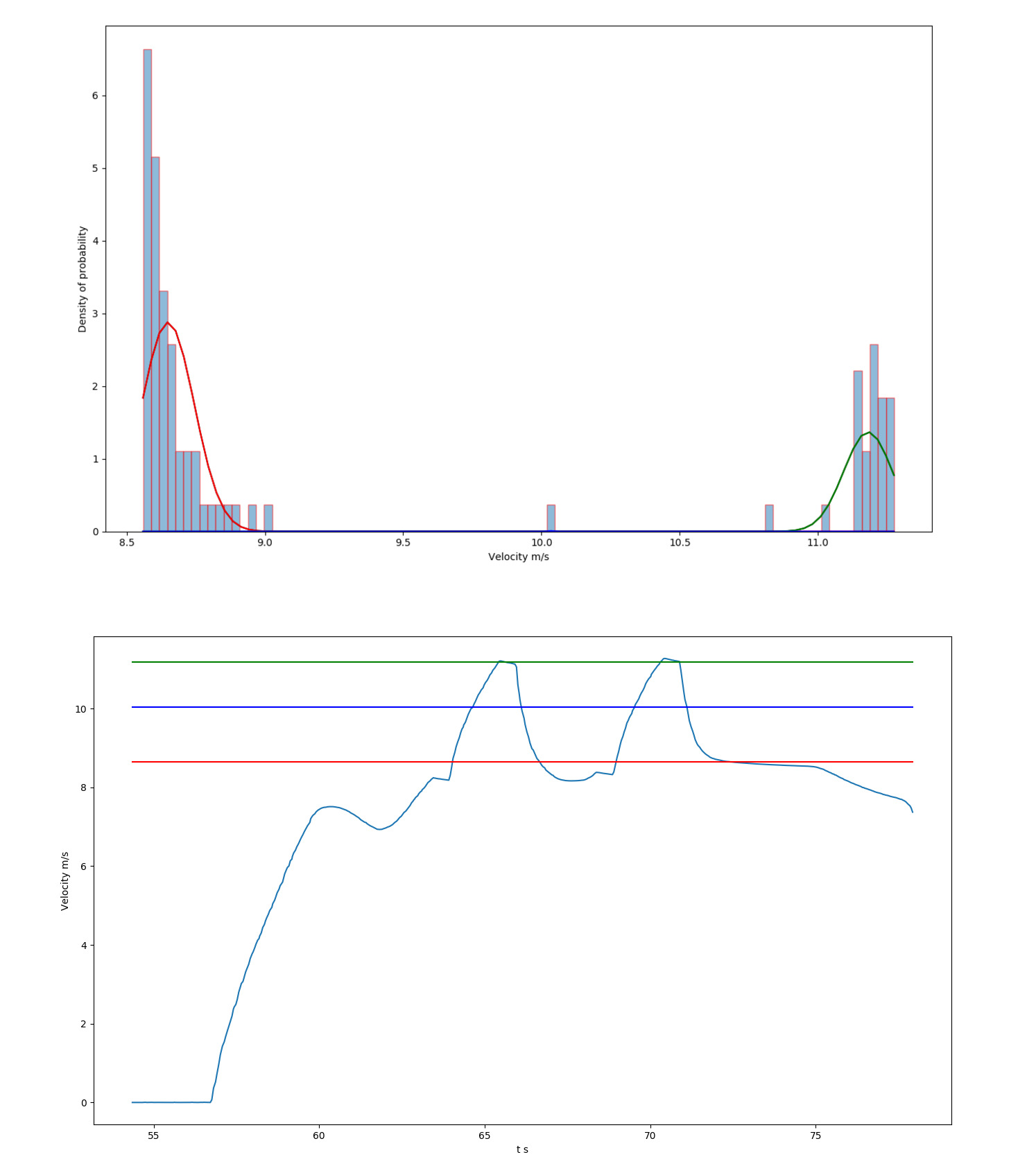
Driver 1 Set 1 Target Speed Histogram Plot & V-t Plot
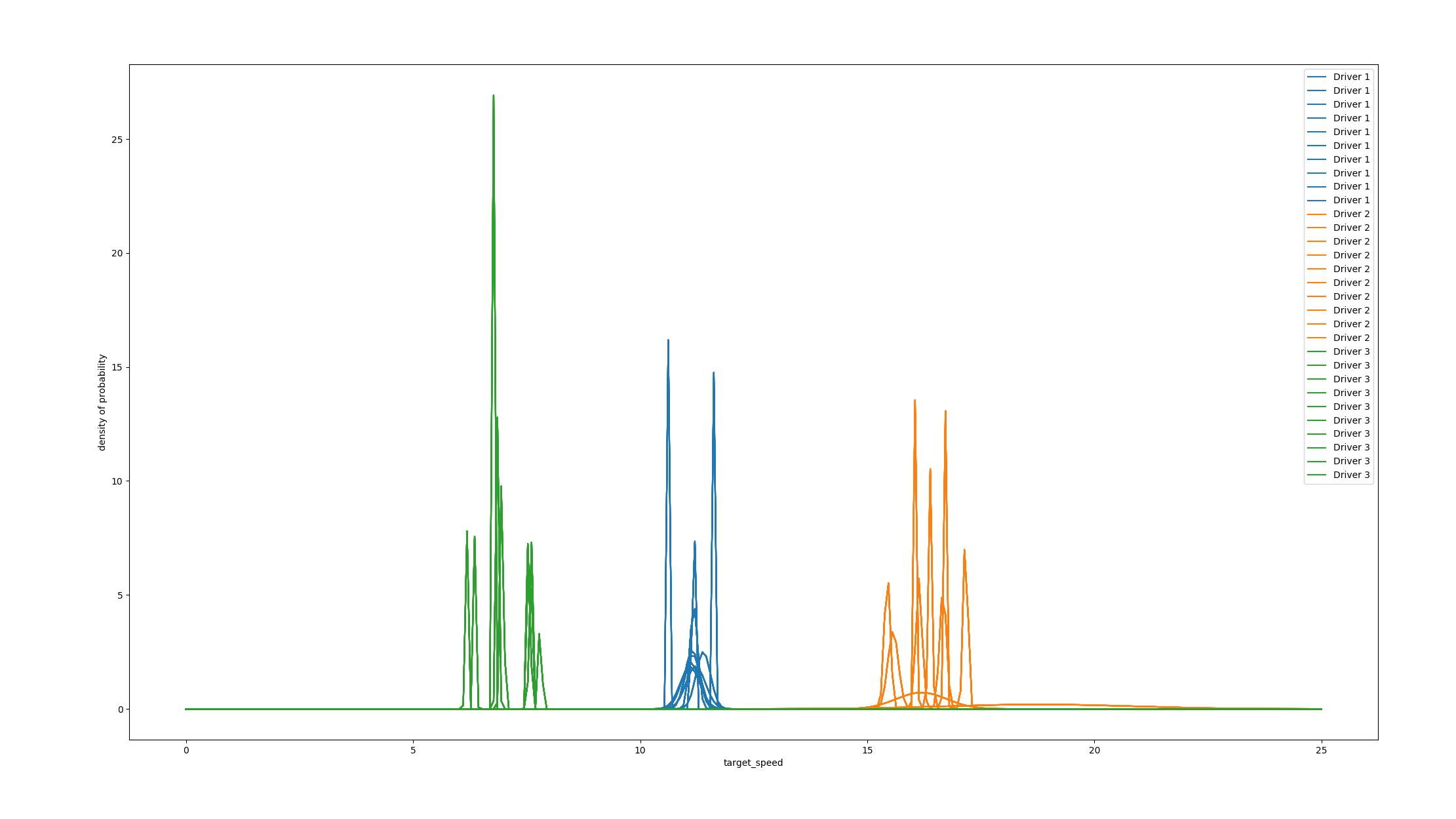
All sets of 3 drivers' data
personalized parameter: Time Headway (THW)
method: GMM
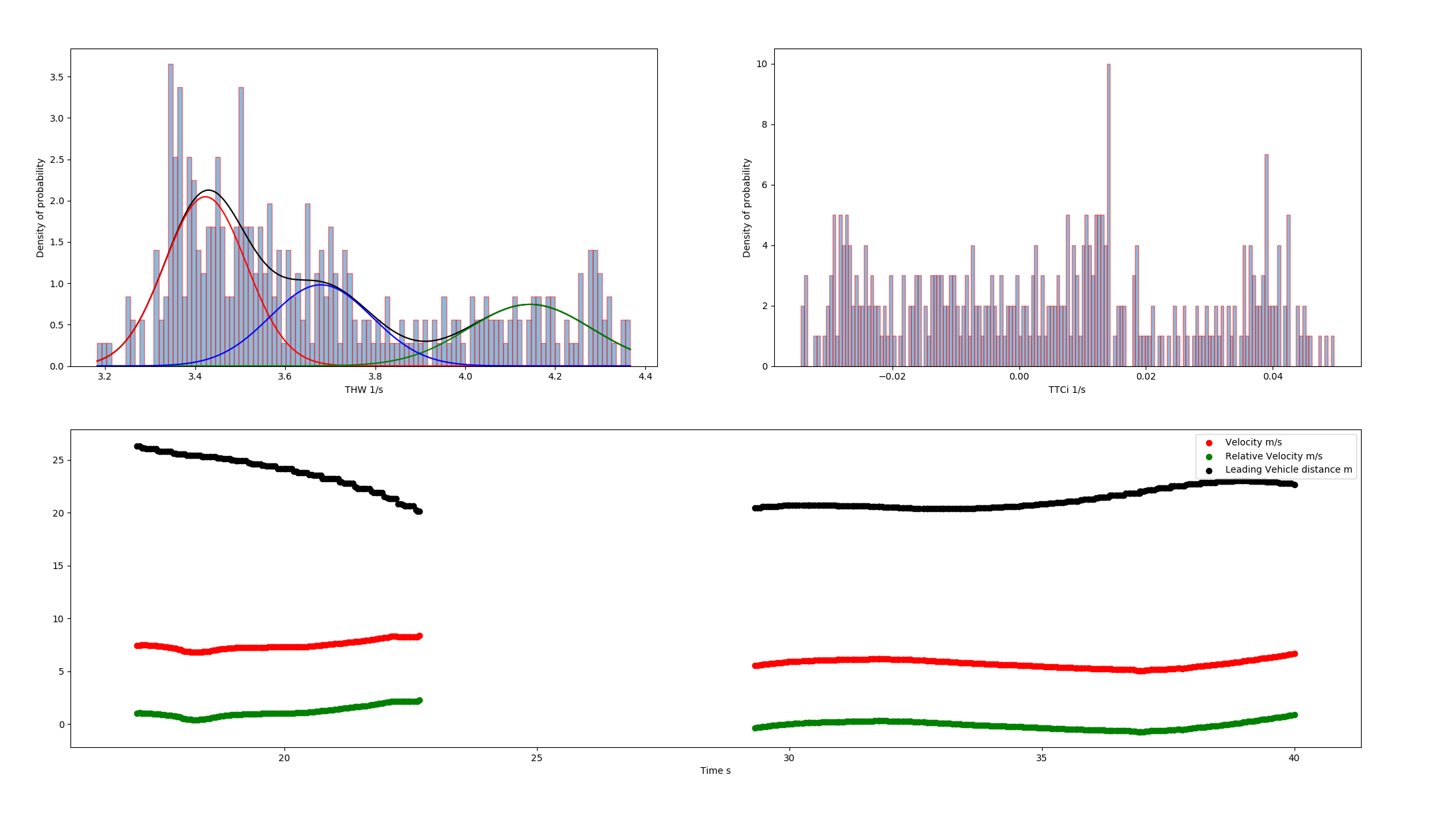
Driver 1 Set 1 THW, TTCi
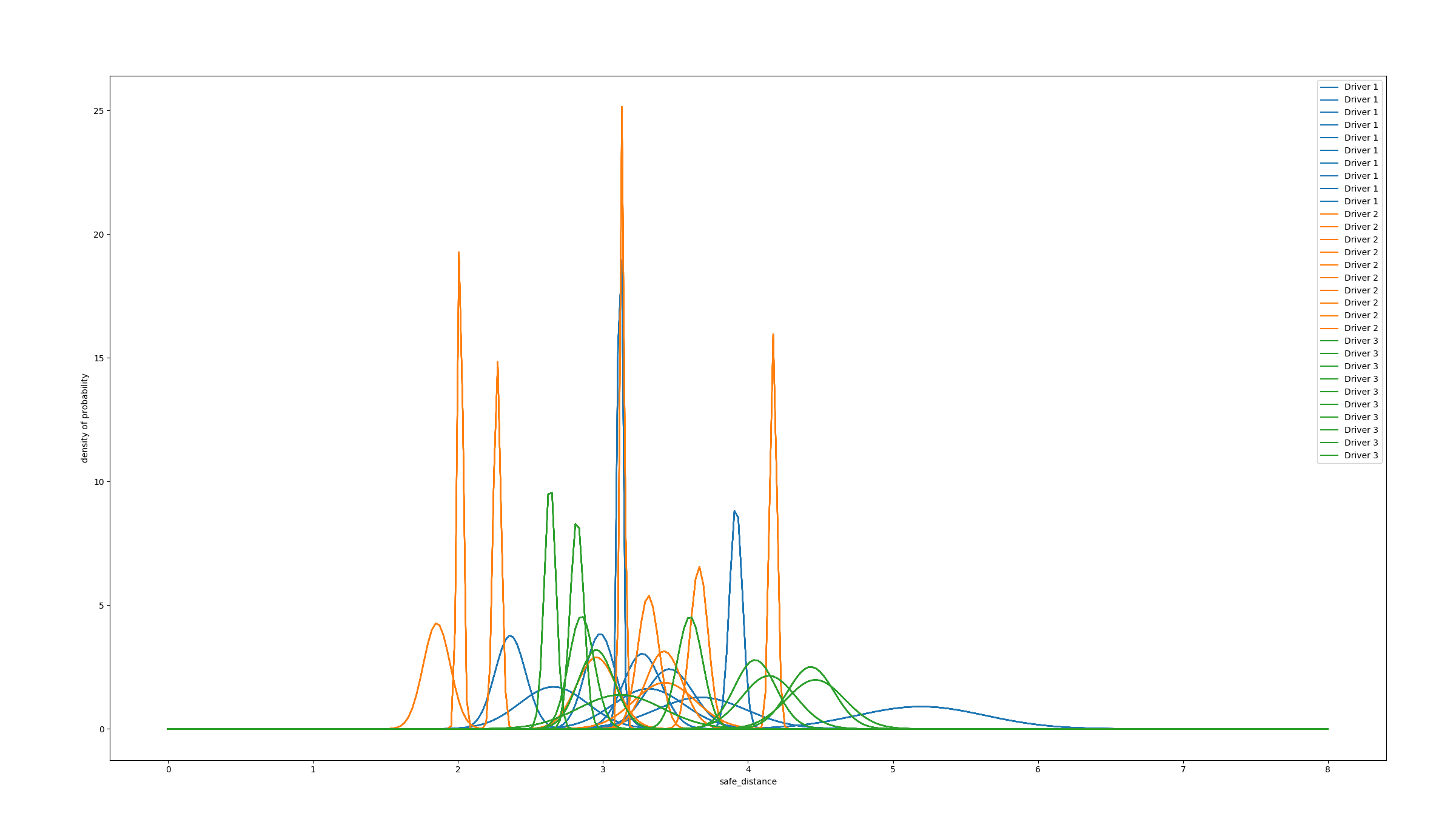
All sets of 3 drivers' data
personalized parameter: Lateral Time, Longitudinal Velocity
method: GMM + COS Trajectory
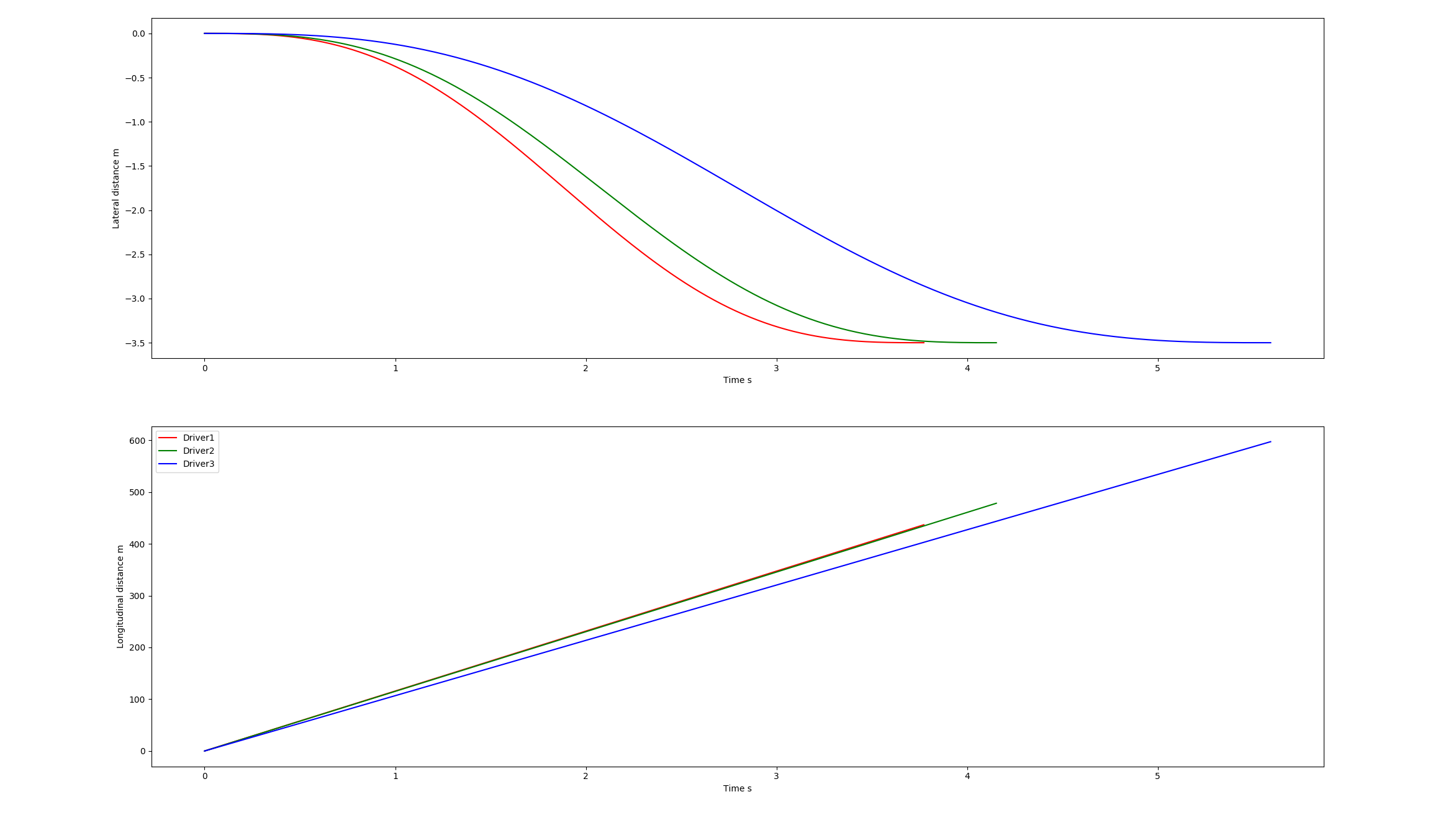
3 drivers' trained models perform in standard case [10m/s, -3.5m, 15m, -12m]